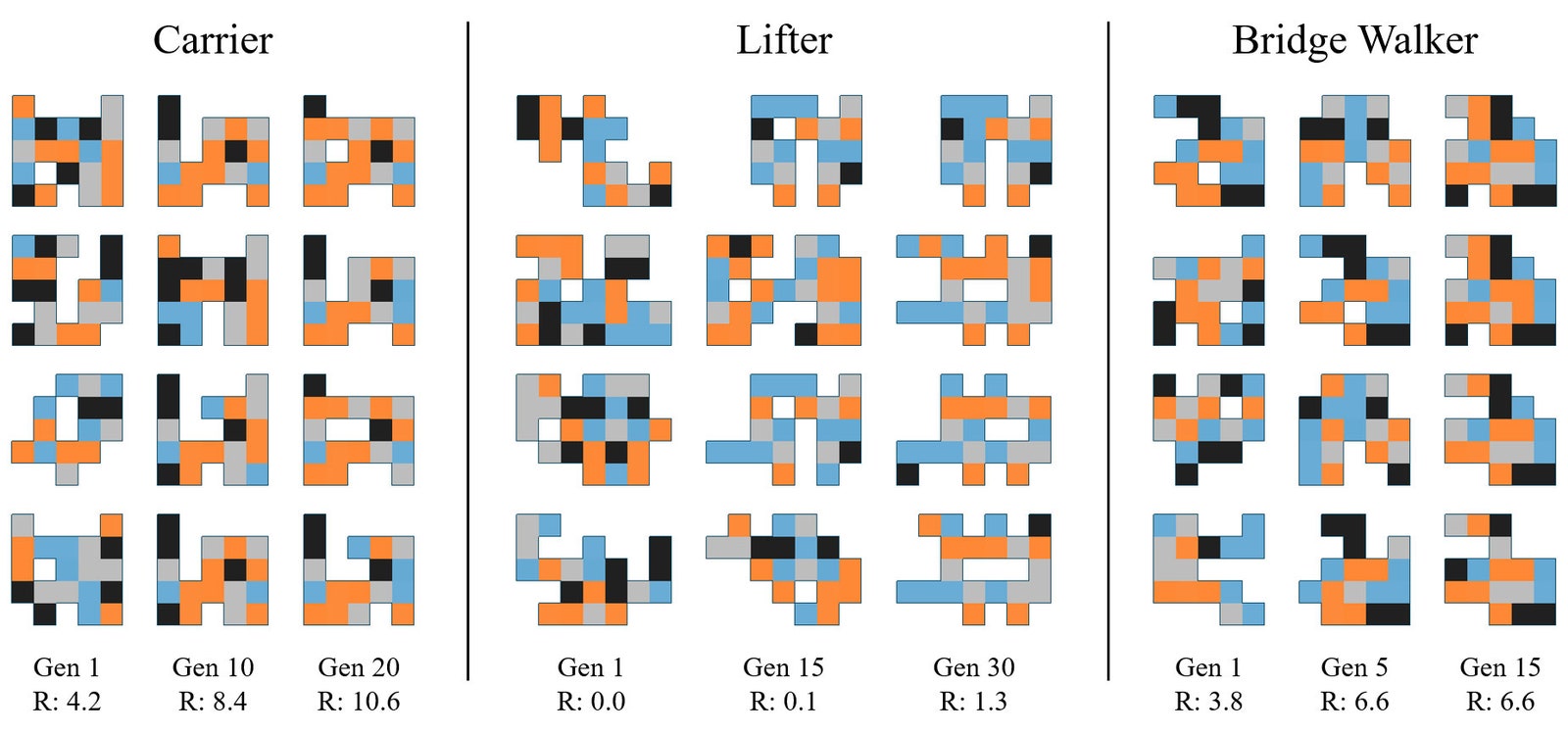If I asked you to design the perfect robot for throwing a block, you’d probably think of something humanoid, with legs for stability and hands for grasping. And who could blame you? If humans are good at anything, it’s throwing stuff.
Video: MIT CSAIL
There’s a zero percent chance you instead thought of the thing in the video above, a Frankenstein’s monster of what appear to be cobbled-together Tetris pieces. That’s because a computer “evolved” this robot’s body and the brain that controls it in a new platform from MIT’s Computer Science and Artificial Intelligence Laboratory. It’s called the Evolution Gym, where instead of relying on human designers—and their human biases—the robots of tomorrow can entrust their design to algorithms. “There’s a potential to find new, unexpected robot designs, and it also has potential to get more high-performing robots overall,” says MIT computer scientist Wojciech Matusik, a cocreator of the system. “If you start from very, very basic structures, how much intelligence can you really create?”
Video: MIT CSAIL
A lot, as it turns out. Above you’ll see a soft robot that learned how to do flips. Each color-coded “voxel,” or unit, within this robot serves a purpose. Black means a rigid piece, and gray means a soft piece, neither of which do anything actively. Conversely, the colored voxels are actuators, or the bits of any robot that produce movement. (In a typical rigid robot, those are the motors that power its joints.) Blue means that the actuator contracts or expands vertically, while orange means it does so horizontally. So when you watch that robot flipping, it’s basically pivoting on the black rigid voxel at its center, while the colored actuators push it off the ground.
Video: MIT CSAIL
This, by contrast, is a simple arch-shaped robot made only of horizontally actuating voxels. It’s legs, basically. But by contracting and expanding in coordination, the voxels make the machine move with surprising grace—kind of gallop, really.
Video: MIT CSAIL
Here’s one that’s learned how to climb. Note the blue actuators on either side of the base, which alternate their movements to get a purchase on the surface while a sort of appendage at the top of the soft robot feels its way up the column. An added challenge is that sections of the column are soft, so the machine has to adapt to these as it shimmies its way up. This is highly complex behavior for such a simple robot, much less one that designed itself.
Illustration: MIT CSAIL



